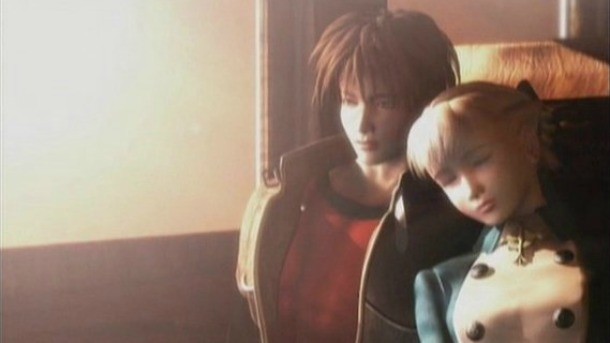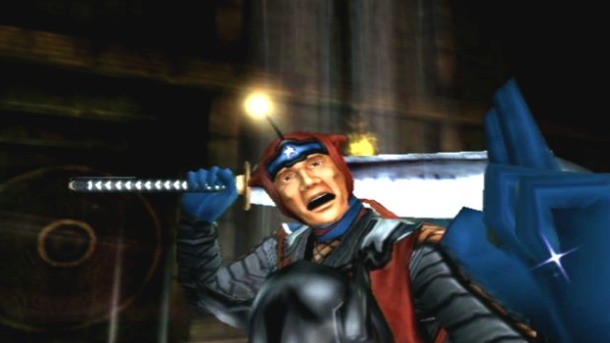Please support Game Informer. Print magazine subscriptions are less than $2 per issue
Remembering Shadow Hearts

As I wrote in my Lost RPG Franchises article, the chances of seeing another Shadow Hearts installment are slim-to-none. But every time the series’ December anniversary rolls around (this year is the 11th anniversary), I reminisce about everything it offered role-playing game fans: intriguing, outside-the-box characters, a fun twist on history and its figures, humorous dialogue, and a timing-based battle system that shook things up.
Shadow Hearts never received the recognition it deserved, and I fear its strengths will be forgotten as time goes on. Therefore, I wanted to reflect on why Shadow Hearts was special and delve into the franchise’s history.
What It Was

Shadow Hearts made its way onto the scene in December of 2001; unfortunately it was overlooked due to another high-profile RPG, Final Fantasy X, releasing a week later. For those who gave Shadow Hearts a chance, it stood out by meshing Lovecraftian-inspired horror with alternate historical events, settings, and figures. Its sequel, Covenant, hit store shelves in 2004, upping the humor and wacky antics while still retaining a serious, emotionally-driven story. It stands as the best offering of the series. The first two installments followed the charismatic yet brash Yuri Hyuga, whose sarcasm became his trademark.
For its third entry, however, developer Nautilus felt it was time for a new cast. From The New World debuted in 2006, and while the lack of Yuri as a lead caused some growing pains, the comedic heart and soul remained alive. The third iteration also moved the setting away from World War I Europe and thrust players straight into North America during Prohibition, which was surging with gangsters like Al Capone.
The Koudelka Connection
Debate often surfaced over whether or not the PSone title, Koudelka, should be considered a part of the timeline. Various characters from the game make their way into Shadow Hearts, alongside references of Koudelka plot points. The influence is heavy throughout, especially while exploring a darker history, but it’s considered a spiritual predecessor, rather than a part of canon. Koudelka stayed vested in horror, whereas Shadow Hearts ventured in comical directions.
A Love Story

Alice: Yuri… do you regret it? I mean, coming this far.
Yuri: Regret? Haha! What’re you talking about! No way! You know, until I met you, I was living the life of a loser. I’m confident about what I’m doing now. I know that I’m needed. My power of fusion, which I thought was so terrible…is what allows me to protect you. Sometimes, I even think such stupid things like, boy, is this happiness? Ha ha ha! I sound stupid!
Disclaimer: This section contains some spoilers.
The first two entries centered on a love story between Alice and Yuri that would largely define the series. These two strangers, who couldn’t be more different, met at the start of the first tale and their growing adoration helped color the adventure and create an investment in their bond. After all, Alice did sacrifice her soul to save Yuri – it’s the ultimate love story. The romance’s execution not only made the ending of the first game matter, but it drove Covenant’s entire narrative. Here, Nautilus added a new potential love interest for Yuri in Karin, but Yuri’s heart remained with Alice. Still, this love triangle is one of the best – Karin was such a likeable character that you started to root for her, even though a romance with Alice was already established. It spoke volumes that Yuri couldn’t get over Alice’s impact on his life, even with somebody as great as Karin standing beside him. That’s a true soul mate.
Kooky Characters

Characters have always been integral to defining Shadow Hearts. Not only did the narrative do a marvelous job at building up interpersonal bonds, but it also offered some of the most distinct characters to grace RPGs. Shadow Hearts opened with the memorable anti-hero Yuri Hyuga. He’s the type of guy who speaks his mind – full of sarcasm and wit – but you love him for it. In fact, when you first meet him, he’s introduced as “Rude Hero.” Yuri also delivers the infamous line about the giant cat in Covenant.
The characters really didn’t hit their stride until Covenant, which started a trend of absolutely goofy protagonists contained within a dark tale. And you know what? It worked. They made the ride so much more entertaining while the plight set before them remained strong. Remember Joachim Valentine, the pro-wrestling vampire, and his desire to prove himself in the unforgettable Man Festival? How about Covenant’s take on Princess Anastasia Romanov? She has childlike charm, constantly sticking out her tongue and kicking Joachim when he acts stupid. Still, who could forget her school-girl crush on Kurando?
From The New World kept things interesting with Frank Goldfinger, a regular joe-turned-ninja, calling himself the defender of Justice. Despite the ridiculous costume, he does have some cred – he learned his ninja arts from…Brazil! But Mao gives Frank a run for his money (and also a hard time as a former student) as a talking cat yearning to become a movie star who just can’t get enough booze and incorporates alcohol into fights. Have you seen more creativity and absurdity infused into characters?
These off-the-wall personalities made the journey exciting with every line of dialogue. A big part of what I loved was the unpredictability of what would happen next with these characters; the lack of boundaries was integral to the appeal.
[Next Up: Fun with history and the Judgment Ring's appeal]
Placing You In History

I’m not the biggest history buff, but I must admit Shadow Hearts’ alternative take on real events made the journey all the more fun. World War I functioned as the main backdrop for the original and Covenant with a Prohibition-era setting for From The New World. That means not just locations in Europe, China, and the U.S. and the atmosphere of the early 1900s, but also infamous historical figures. In the first entry, party member Margareta G. Zelle was based off World War I spy Mata Hari, who has a remarkably similar real name. Roger Bacon, who makes an appearance in all of the games, was a real philosopher driving empirical science and was a precursor to the Scientific Method.
Even Joachim’s wrestling teacher, The Great Gama, is a take on one of the best wrestlers of all, who was never defeated in his long career. He’s also just as goofy looking. Thomas Edward Lawrence may have been hot for Lucia in Covenant and a saving grace to the group by offering them information, but in actuality, he’s Lawrence of Arabia. From The New World continued the trend; you befriend the infamous Al Capone when you save him from assassination, making him help you throughout the game. And that’s only scratching the surface of historical cameos. Part of the fun was never knowing when they’d show up and how they’d impact the story.
The Judgment Ring

Shadow Hearts added flavor to the traditional battle system with the introduction of the Judgment Ring. This new dynamic forced you to pay attention during battles, making each turn matter. Timing became the focus, as segments of the Judgment Ring are colored for success. As a needle goes around the ring, you time your button press to hit those areas and execute their corresponding actions. Additionally, small slivers at the end of the hit areas provide critical damage. This was one more important decision you had to make, because missing the small critical area could cost you a turn.
The Judgment Ring wasn’t purely for battles; it also found its way into item purchasing and minigames. The complexity of the Judgment Ring grew as customization options opened over time. Surprisingly enough, the chance of whether or not you’d fail at executing an attack provided an adrenaline rush and a sense of achievement, especially for more complex specials. The battle system evolved over time, with Covenant introducing combination attacks and targeted strikes and From The New World including double attacks and enhanced combos. That’s what’s admirable about this battle system – it kept introducing new worthwhile mechanics. I wish we could have seen what else the developers would have done with more entries.
Why It Worked

Shadow Hearts provided an emotional narrative, but never took itself too seriously in the process. Balancing these two disparate moods could have been disastrous, but Nautilus rose above the challenge, showing the benefit of levity. Like its title, Shadow Hearts was dark, but it also had a lot of soul, which pulled you in.
I still think about the series and I haven’t found much that matches it. It would have been fun to see how it would have evolved, even though some growing pains hit in From The New World. But the question remains – where else could this series have gone? New locations, places in history, goofier characters than we’ve seen? We may never know.
What did you love about Shadow Hearts?










